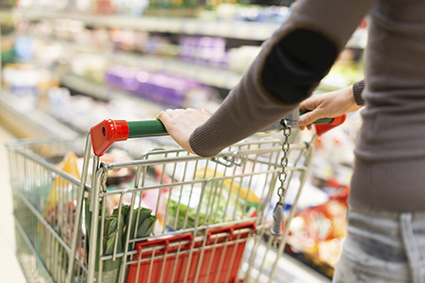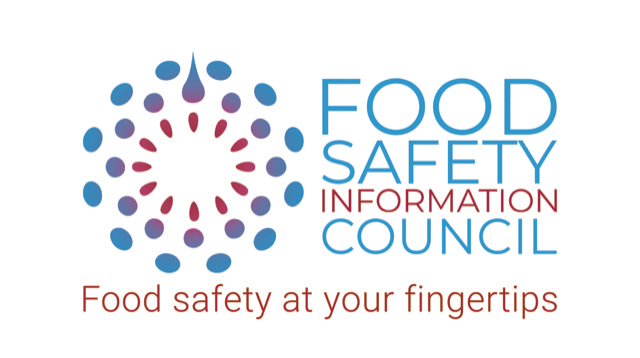
Strict food safety standards apply to food retailers in Australia to ensure that the food you buy is safe. But there are some signs you can look for to ensure you buy a safe product. Once you buy the food, it’s up to you to make sure that it stays safe including not leaving shopping in a hot car.
Clean
Choose a clean trolley or basket for your shopping. If you don’t think any of those available are up to standard talk to the store manager.
Never put fresh fruit and vegetables you won’t peel or cook before eating directly into the trolley. Put them in a clean bag.
Re-usable shopping bags can be a source of contamination. If you use your own shopping bags make sure you regularly wash them. Use separate, leak-proof, easily washable bags for meat/poultry/seafood and for fruit and vegetables. Insulated bags or coolers should be used to carry food such as meat and dairy products that require refrigeration.
Choose
Save money and lower your food safety risk by planning ahead and making a shopping list. If you buy perishable goods in bulk make sure you have room at home to freeze what you don’t use immediately.
Damaged food packaging can provide an entry for bacteria. For example, check cans for unusual swelling and/or leakage, broken tamper seals, rusty or severely dented cans, and damaged seams. Do not purchase the food if you see any signs of defects.
Don’t buy food that has mould growth visible unless it is supposed to be there such as on some cheeses and cured products. If in doubt ask the shop keeper for advice.
‘Use by’ dates are dates marked on foods to advise shoppers that the food must be eaten before the marked date for safety reasons. Foods marked with a use by date cannot legally be sold after the date marked. Eating foods after the use by date is at your own food safety risk.
‘Best before’ dates refer to the quality of the food. They are marked on foods which do not present food safety issues, but if these foods are eaten after the best before date they may have lost nutritional value and quality. Foods can be sold after the best before date marked provided the food is fit for human consumption.
The only food that can have a different date mark on it is bread, which can be labelled with a ‘baked on’ or ‘baked for’ date if its shelf life is less than seven days.
Foods that have a shelf life of two years or longer, for example canned food, do not need to be labelled with a ‘best before’ date. This is because it is difficult to give the consumer an accurate guide as to how long these foods will keep, as they will retain their quality for many years and are likely to be consumed well before they spoil.
Check marked down food with use by dates to be sure it is within that date. If you cannot read the date marks or if they are covered by a sticker, for example a price mark down sticker, then ask the shop keeper for the date or find a package with clearly visible markings. Remember if you freeze food that has a use by date you should use it straight away after thawing as the use by date marked will no longer be relevant.
Special needs?
Vulnerable people, such as pregnant women, the elderly, the very young and people with poor immune systems, are at risk of the illness listeriosis caused by Listeria in food and need to avoid certain foods such as soft cheeses and deli meats. Check high risk foods at www.foodsafety.asn.au. For allergy information see Allergy and Anaphylaxis Australia’s website .
Chill
Shop for non-perishable food first – leave the chilled and frozen food until last.
Keep hot foods separated from frozen and chilled products while shopping and during transport home.
If a product is labelled as ‘ keep refrigerated’ or ‘keep chilled’ and is not in chilled storage, don’ t buy it and alert the store manager.
Plan to do your food shopping last and take it straight home so perishable food is allowed to warm to temperatures in the danger zone (5° to 60°C) for as little time as possible. Chilled and frozen foods are best taken home in bags or boxes with insulation added to keep food cool and an ice brick can be included especially if you travel a long distance or expect a delay. Always go home with food purchases as soon as possible and don’t leave your shopping in a hot car.
Separate
Avoid shops/markets where cooked or other ready-to-eat food (such as cooked seafood, cooked poultry or deli meats) can be seen in contact with raw products or where all these foods are served with the same utensils or are handled by the same shop assistant without changing gloves. Serious concerns should be reported to your State/Territory Health Department or local council.
Keep raw meat, poultry or seafood separate from cooked and ready to eat foods. Ask the check-out operator to pack them in a separate, leak-proof bag (they can be packed in the same bag) and encourage them to pack chilled and frozen items together by placing these items together on the conveyor belt and by providing an insulated bag or cooler.
Storage
When home, pack chilled and frozen products into your refrigerator or freezer immediately.
If you receive home food deliveries make sure you are there to receive them and you put chilled and frozen products straight into the refrigerator or freezer. Alternatively arrange for these foods to be placed in a cooler with ice bricks in a shaded place that will keep your delivered food chilled until you arrive home.
If you get home and then find some evidence of tampering or package damage that you didn’t notice when buying it or expect for online purchases, return the product to the store or call the manufacturer.
Check labels for specific storage conditions to ensure safety and quality. Don’t assume that you know how to store food as recipes change and modern food products like jams or sauces may have less salt or sugar than in the past and may need refrigeration.
For more advice on how long food will last in your pantry fridge or freezer see:
Food Standards Australia New Zealand Canned food
Watch this short video about ‘use by’ and ‘best before’ dates
